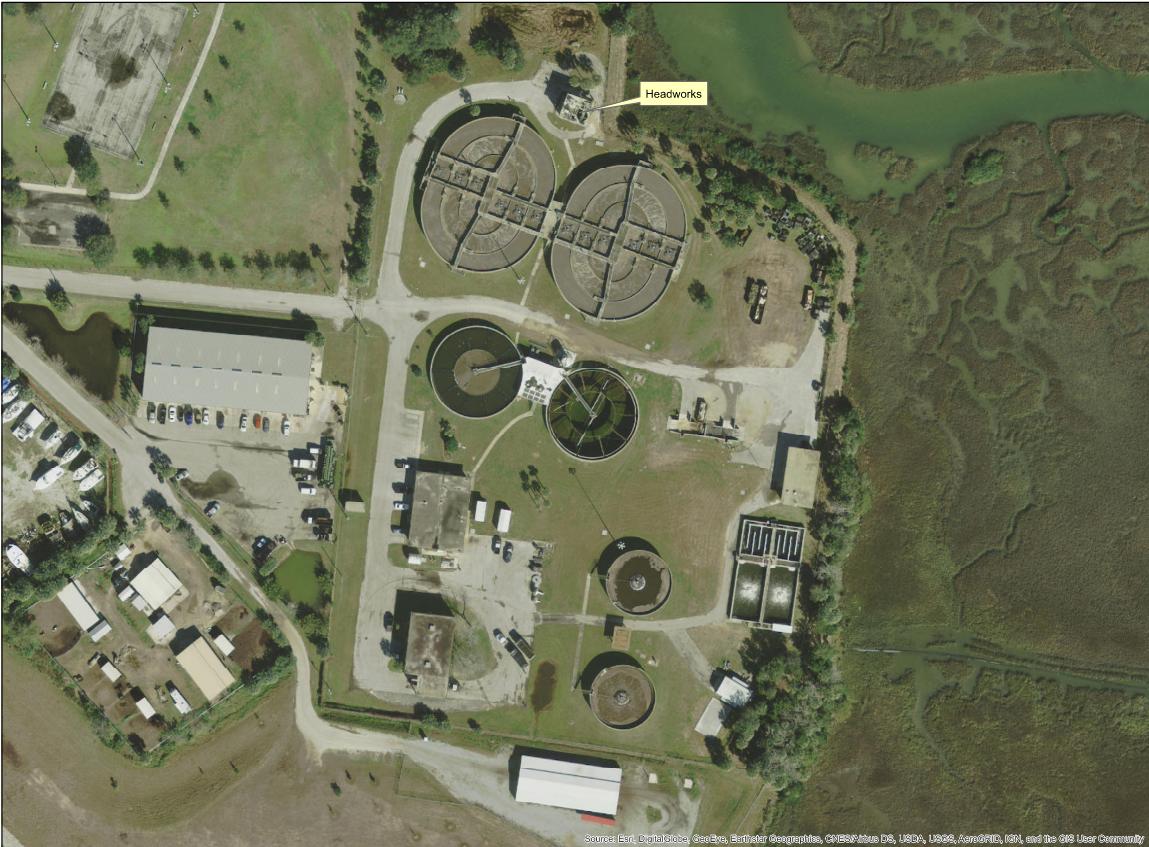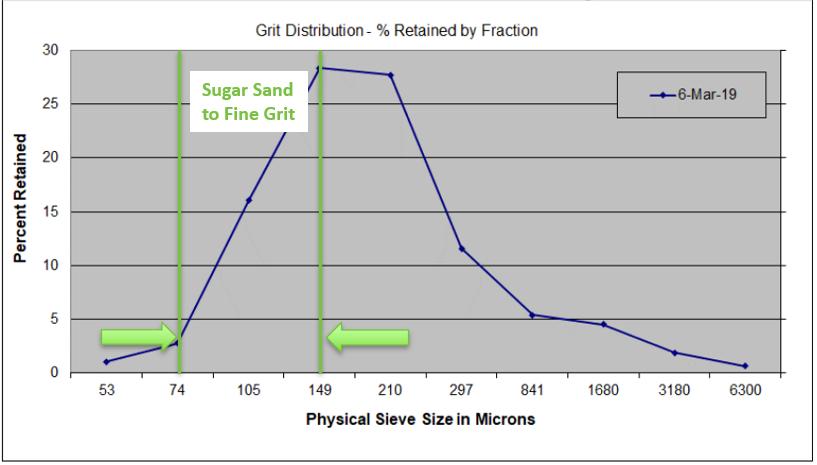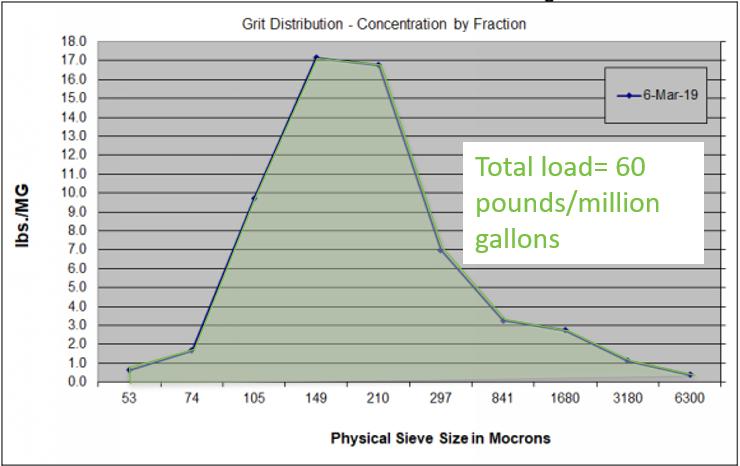
9 minute read
A Holistic Approach to Headworks Design: A Case Study of the St. Augustine Wastewater Treatment Plant No. 1 Headworks
FWRJ A Holistic Approach to Headworks Design: A Case Study of the St. Augustine Wastewater Treatment Plant No. 1 Headworks Rehabilitation
Steve Curmode, Ed Fernbach, Yanni Polematidis, and Chris Cerreta
Advertisement
The City of St. Augustine (COSA) owns and operates the Wastewater Treatment Plant No. 1 (WWTP No. 1), with a permitted capacity of 4.95 mil gal per day (mgd), as shown in Figure 1.
The existing headworks structure for the plant was built in 1984 and is equipped with a mechanically cleaned step screen, bypass channel with a bar rack, and vortex-style grit chamber. Most municipalities now employ fine screening (less than or equal to 6 mm) and advanced grit removal processes for preliminary treatment. Although not required, use of such equipment has proven to be cost-preventative by protecting downstream processes from damage that can come from large solids and rags entering the plant, and grit and solids accumulation, thus reducing maintenance costs.
Historically, plant system design has been driven by effluent regulations, but there is a shift in attention toward influent flow analysis when designing headworks is needed to optimize performance. Traditionally, preliminary treatment equipment has been selected based on requirements of downstream processes, rather than influent characteristics. Sizing and selecting screening and grit removal equipment without characterizing the influent flow can result in higher capital costs, poor performance, and sometimes, damage to the equipment.
Throughout the last several years, operations at WWTP No. 1 have experienced poor performance from screening and grit removal equipment. This has led to temporary bypass measures, grit accumulation downstream (biological basins and clarifiers), wear of equipment, and increased operation and maintenance oversight, which have all strained plant resources. Additionally, the preliminary treatment structure has undergone significant structural deterioration resulting from the high hydrogen sulfide environment, exposure to salt air from the nearby coastal waterway, and failure of the polyvinyl chloride (PVC) lining system in the channels.
To address the issues at the pretreatment system, and the deteriorating infrastructure under a defined capital budget, COSA began exploring ways to rehabilitate the existing structure, rather than replacing it with a new one. A Phase 1 study project was conducted in spring 2019 that evaluated the screenings, grit removal, and structural rehabilitation options that meet project constraints and reuses most of the existing headworks structure.
Several constraints were immediately identified: S Meeting a stringent existing hydraulic grade line in the headworks S Existing footprint limitations S Addressing staff operational preferences S Fixed capital budget
To properly address these constraints during the Phase 1 evaluation study ahead of making design and capital decisions, COSA implemented three tests/studies, each designed to better understand the three primary project drivers of improved screening, improved grit
Steve Curmode, is wastewater superintendent at the City of St. Augustine. Ed Fernbach, P.E., is a headworks technical expert at CDM Smith in Portland, Ore. Yanni Polematidis, P.E., BCEE, PMP, is a senior project manager and principal engineer at CDM Smith in Jacksonville, Fla. Chris Cerreta is an environmental engineer at CDM Smith in Denver.
Continued from page 8 removal, and structural rehabilitation. Results from these studies were used to refine design criteria and select equipment and rehabilitation methods that address concerns specific to WWTP No. 1.
Screenings Evaluation
The existing screen in the headworks channel is a step screen with 6-mm openings installed in 2007. It consists of a 2-horsepower (hp) motor and is designed to handle 11 mgd. At the time of the evaluation, the screen was operating as intended mechanically, but did not achieve the intended removal of rags and debris that can harm downstream processes. Evidence of this poor capture could be seen in the receiving dumpsters, where screenings appeared to accumulate at a rate of less than 1 cu yd per week, indicating minimal removal at a plant that receives a peak-hour flow (PHF) up to 12 mgd.
To understand the limitations of the existing screen and identify methods of improving performance at the headworks, COSA performed an analysis of the influent wastewater characteristics to determine the most-effective screen size and type to replace the existing screen. The purpose of the test was to sample the wastewater from the plant and incorporate the findings in the design and proposal of screening equipment for that specific facility. The procedure consists of pumping flow upstream of the screen through two sieves, each with different opening sizes and types that are meant to simulate different size screens so that the performance of each can be evaluated.
The test began with an influent flow analysis that characterized flow and debris entering the plant. Testing occurred Dec. 1920, 2018, and included slotted and perforated openings ranging from 3 to 6 mm in size. Partial results of each sieve tested can be seen in Figure 2, where differential pressure equates to headloss across the screen and total gallons equates to flow across the screen. As seen in Figure 2, differential pressure, or headloss across the screen, tends to increase with flow. Smaller openings tend to have a greater increase in differential pressure, as seen by comparing the “2P” and “6P” opening sizes. The screenings capture ratio (SCR) was also estimated by weighing the screenings captured on each sieve and dividing this by the total weight of solids in the waste stream.
These results were ultimately used to make recommendations on opening size, opening type, and screen style meant to be the most effective at removing debris and inorganics specific to WWTP No. 1, while limiting differential pressure such that hydraulic limitation are met.
Results of the screening evaluation concluded that the existing step screen is achieving poor capture due to the style of screen, which frequently disturbs the screenings mat and negatively affects capture. The results led to the elimination of screens that are typically used for large-debris removal, such as with combined sewers and in lift stations. Given the tight hydraulic grade line, perforated plate screens and very fine screens were also eliminated from consideration.
Upon refinement of the design criteria, it was concluded that for a PHF of 12 mgd (through a single channel), a mechanical center flow with 6-mm slotted openings was mostsuitable for COSA. This screen meets the key criteria of simple retrofit (small footprint), low headloss (<11 in.), limited carryover, high capture rate, and proven experience regionally.

Figure 2. Screening Study Test Results
Table 1. Overview of Grit Characteristics

Grit Characterization Study
The existing grit removal system is a vortexstyle grit chamber designed to handle a flow of 11 mgd. Like the step screen, the grit system is not achieving intended removal, which is clear


Figure 3. Distribution of Influent Grit at Wastewater Treatment Plant No. 1 Figure 4. Grit Concentration at Wastewater Treatment Plant No. 1
through the small accumulation of grit in the receiving dumpsters and accumulation of grit in the downstream clarifiers.
To better understand the size, concentration, and behavior of grit entering the plant, COSA employed a company specializing in grit characterization to perform a grit study. Results of this study will be used to develop grit removal design criteria specific to WWTP No. 1 that ensure the proper equipment selection is made.
Testing occurred on March 6, 2019, during normal flow conditions and was timed to bracket the daily peak flow ramp-up, given that most grit enters a plant during daily flow peak. The testing procedure consists of pumping water upstream of the existing grit collection chamber into a simulated settler that is then used to analysis the captured grit.
Table 1 provides a summary of grit size that is often found at WWTPs across the United States.
Partial results of the grit characterization study can be seen in Figure 3, which revealed that the majority of grit entering the plant is fine, and that just under half is considered to be very fine. This confirms that, without targeting the sugar sand, much of the influent grit is missed by preliminary treatment equipment and subsequently allowed into the downstream treatment processes.
Additionally, the influent grit concentration at the time of sampling was above the Florida average at 60 lb/mil gal (MG), as seen in Figure 4. Grit loading is known to be greatest during peak wet weather events, particularly during the first flush. Given that the grit concentration was above average during sampling at average flows, it’s expected that grid loads will far exceed this value during PHF, further emphasizing the need for adequate removal.
Results from the grit characterization study helped develop site-specific design criteria for grit capture and processing equipment that target fine to very fine grit. Like screening technologies, CDM Smith conducted an evaluation of different grit removal technologies that considered design criteria and other project drivers, including operation and maintenance, cost, performance data, and client preference.
The stacked tray grit removal system was selected, along with grit washing and dewatering equipment that is sized to capture the fine 74-micron grit. This technology meets grit removal design criteria and several project drivers, including repeatable performance based on actual test data, studies, and successful installations in the region.
Structural Evaluation Conclusion
The headworks structure has undergone significant structural deterioration resulting from the high hydrogen sulfide environment, exposure to salt air from the nearby coastal waterway, and failure of the lining system (PVC liner) in the channels. To determine the condition of the existing concrete and its ability to be rehabilitated, CDM Smith conducted a structural evaluation on Feb. 26, 2019, and recommended that a petrographic analysis be performed.
Two concrete cores were obtained from the top slab in April 2019 and sent to an independent lab to undergo analysis. An analytical image of one concrete core used to determine structural integrity can be seen in Figure 5.
Results of this test revealed that the concrete is of good quality and in good condition. It was determined that erosion and carbonation on the top deck is present, but does not extend beyond a ¼ in. into the cores. This led to the conclusion that the existing concrete can be rehabilitated to continue functioning as originally designed and help shape structural repair and modification recommendations.
Through these results, the following repairs and/or modifications were recommended: S Remove existing PVC liner S Clean and repair concrete surfaces S Clean and inject structural repair materials in structural concrete cracks S Clean and resurface concrete top slab and stairs S All proposed concrete surface repairs shall include sulfate and weather-resistant top surface S Remove and replace corroded guardrail and light poles
When beginning a headworks project, be it a new structure or modifications to an existing structure, it’s important to utilize planning-level studies to develop site-specific design criteria. Doing so can minimize upfront costs, ensure proper equipment selection, balance operational preferences, and avoid future headaches and rework. The Phase 1 study led to results that conclusively allow COSA to reuse its existing headworks structure with a technology selection that was specifically sized to the tested influent characteristics of screenings and very fine grit within a limiting hydraulic grade line. Through a unique approach of utilizing key research studies and opportunities available to municipalities from manufacturers, COSA was able to appropriately select high-performance pretreatment equipment and rehabilitation methods that address concerns specific to the plant’s aging infrastructure ahead of making design and capital decisions. S Florida Water Resources Journal • January 2022 11










